Quick Summary
Signatures don’t have to be cursive to be legally valid. What matters most is intent (agreeing to sign) and authentication (proving who signed). Whether you type your name, draw it, or use a digital signature, it can still hold the same legal weight as a handwritten one. SignWell makes it simple to create secure, legally compliant signatures in any format. For more insights on e-signatures and compliance, visit our blog.
What Makes a Signature Truly Legally Valid
Many people grew up believing signatures must be in flowing cursive to be “official,” and with schools no longer teaching cursive writing in many states, an entire generation feels uncertain about proper signature formats.
The confusion has grown with electronic signatures and digital documents. Do typed names count as signatures? Are digital cursive fonts required for e-signatures to be valid? These concerns are understandable, but the legal reality is much simpler than most people think.
In this article, we’ll break down exactly what makes a signature legally valid, explain how electronic signatures fit in, and show how tools like SignWell help you create legally valid e-signatures.
Why Listen to Us
SignWell has helped over 65,000 teams navigate signature requirements across industries where compliance matters most, from healthcare and legal services to finance and government contracting. Our platform handles millions of signatures annually in every format imaginable, giving us deep insight into what actually matters for legal validity versus outdated misconceptions that slow down business processes.
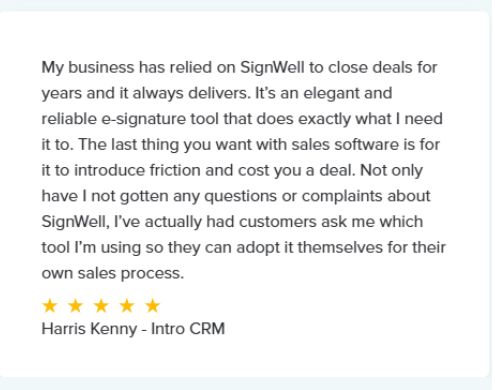
What Are Cursive Signatures?
A cursive signature is written in flowing, connected handwriting where the letters link together in one continuous motion. It’s the traditional way many people were taught to sign their names; no wonder it’s seen as more formal or elegant.
In the past, cursive was standard in schools and used for signing important documents. But as penmanship lessons have declined, fewer people use it regularly. Many professionals today prefer signatures that mix cursive with printed letters or use simple block lettering for clarity, speed, and consistency.
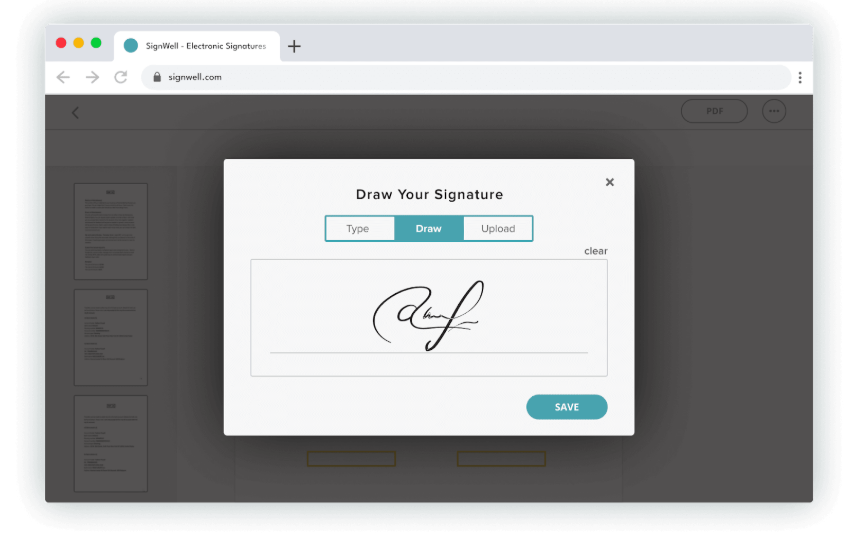
Do Signatures Have to be in Cursive to be Legally Valid?
No, signatures do not need to be in cursive to be legally valid. Courts focus on intent to sign, identity authentication, and document authentication, not handwriting style. Your signature can be printed letters, cursive, or even symbols, as long as you intend it to represent your agreement to the document.
What Makes a Signature Legally Binding?
Three elements make a signature legally valid:
- Intent to sign: You must consciously decide to authenticate the document.
- Identity authentication: The signature should reasonably identify you as the signer.
- Document authentication: The signature indicates your agreement with the document’s contents.
These requirements apply equally to handwritten and electronic signatures.
Can I Use Printed Letters Instead of Cursive?
Absolutely. Printed signatures are completely legal and often preferred in business for clarity and readability. Many professionals use block letters because they’re easier to read and appear more professional. Banks, government agencies, and businesses regularly accept printed signatures without question.
Other advantages of printed signatures include:
- Better readability: Block letters are clearer for verification purposes
- Professional appearance: Clean, structured look suitable for business contexts
- Consistency: Easier to replicate accurately across multiple documents
- Universal acceptance: No institutional preferences for cursive over print
Are Electronic Signatures Required to be in Cursive?
No, electronic signatures can be typed names, digital drawings, uploaded images, or click-to-sign confirmations. The ESIGN Act gives electronic signatures the same legal validity as handwritten ones, regardless of format.
SignWell supports all signature creation methods while ensuring every document stays secure, compliant, and legally binding.
Here’s why electronic signatures are a better fit than traditional cursive requirements:
- Format flexibility: Any digital mark or typed name can serve as a valid signature.
- Improved accessibility: Ideal for users who can’t or prefer not to write in cursive.
- Professional consistency: Ensures every signature looks clean and consistent across devices and platforms.
How to Create Electronic Signatures: Step-by-Step
Step 1: Create Your SignWell Account
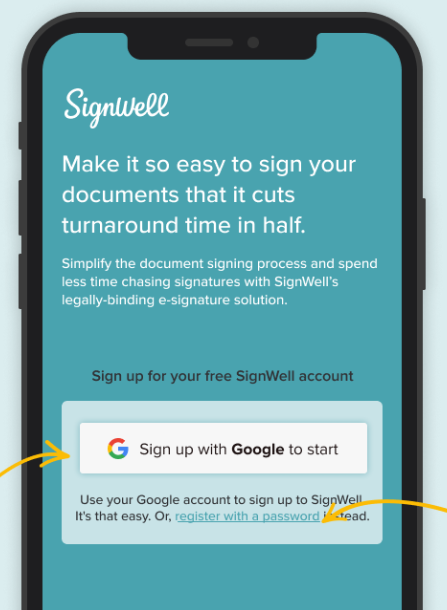
Visit SignWell.com and create your account. You can sign up in two quick ways:
- Google Signup: Click “Sign up with Google” and connect your Google account
- Email and Password: Choose “Sign up with email” to create a custom account
SignWell offers a completely free plan with no time limits, so you can explore core features before upgrading.
Step 2: Create Your Electronic Signature
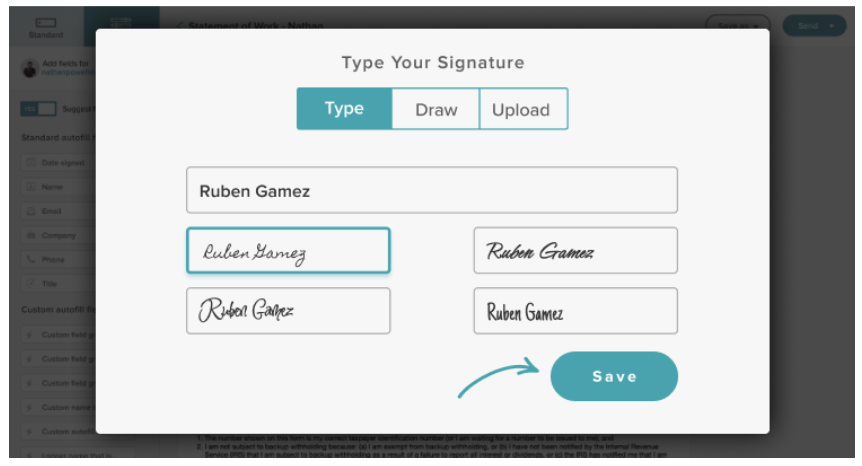
There are three professional methods to create your digital signature:
- Draw: Use your mouse, trackpad, or touchscreen to draw your signature for a natural, handwritten look.
- Type: Choose from professional fonts designed specifically for signatures
- Upload: Import high-quality images of your handwritten signature with automatic optimization
Step 3: Prepare Your Document for Signing
Upload documents in any format (PDF, Word, Excel, PowerPoint) or use SignWell’s built-in templates. Use the drag-and-drop interface to place signature fields, date fields, text boxes, checkboxes, and dropdown menus exactly where needed.
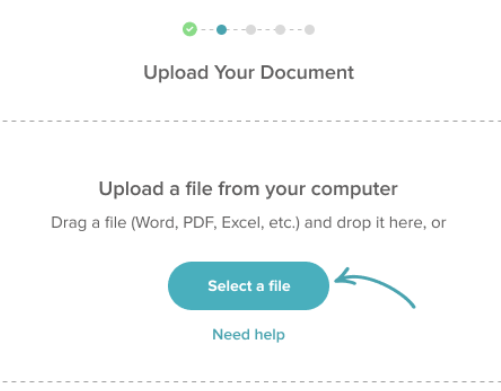
Step 4: Send for Electronic Signatures
Add recipients and set signing orders for complex approval processes. SignWell’s customizable email invitations maintain your professional brand while clearly explaining the signing process. Our platform also sends automatic reminders at intervals you choose.
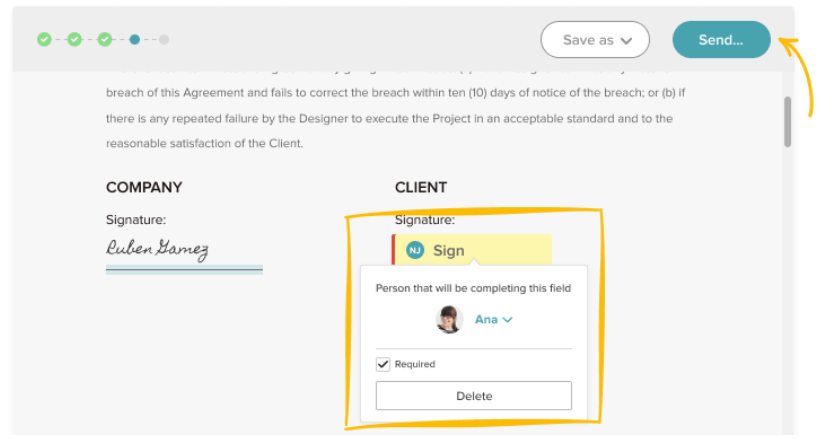
For more insights, read our step-by-step guide on how to create a signing order for seamless document workflows.
Step 5: Track and Manage Signed Documents
Monitor document status in real-time through your dashboard. Every completed signature includes a comprehensive audit trail for legal compliance.

Questions About Signature Style
What’s the difference between online signatures and electronic signatures?
Electronic signatures (e-signatures) are the broader legal term covering any electronic signing method. Online signatures specifically refer to signatures created through web-based platforms. Both are equally valid under the ESIGN Act.
Do banks require cursive signatures?
No, banks don’t require cursive signatures. They maintain signature cards for comparison, but focus on general consistency patterns rather than handwriting style. Your bank signature can be printed, cursive, or a combination; just keep it reasonably consistent for verification purposes.
Do notarized documents require specific signature styles?
Notarized documents don’t require cursive signatures. Notaries verify your identity through government-issued ID and witness your signing, but they don’t evaluate your handwriting style. Your signature just needs to reasonably match your identification and demonstrate intent to sign.
Are digital signature pads legally binding?
Yes, signatures captured on digital pads (like at stores or delivery services) are legally binding. These devices record your signature digitally and often include timestamps and other authentication data.
Do international documents have different signature requirements?
International documents generally follow the same principle: intent matters more than style. However, some countries may have specific authentication requirements like apostilles or consular certification. These processes verify document authenticity rather than signature format.
Do courts prefer cursive over printed signatures?
Courts don’t prefer any particular signature style. When evaluating disputed signatures, they examine consistency, circumstances, intent, and supporting documentation rather than handwriting format. Both cursive and printed signatures receive equal legal consideration.
Are there business advantages to cursive signatures?
Cursive signatures may appear more traditional or formal to some clients, but printed signatures often provide better readability and professional appearance. The best signature style is one that feels natural to you, projects your desired professional image, and remains consistent across documents.
How do signature requirements apply to contracts?
Contract signatures follow the same legal principles regardless of style. What validates a contract signature is the signer’s intent to agree to the terms, proper identity verification, and capacity to enter the agreement. Cursive, printed, or electronic signatures all serve this purpose equally.
Should I use the same signature everywhere?
General consistency helps with verification, but perfect uniformity isn’t required. Natural variations occur due to circumstances, age, and writing conditions. The key is maintaining recognizable patterns that reasonably identify you as the signer while demonstrating clear intent to authenticate documents.
Do different documents require different signature formats?
While signature format requirements are generally consistent, certain documents may have specific authentication needs or institutional requirements.
What’s the difference between wet ink and electronic signature requirements?
Both have the same legal validity and must demonstrate intent and authentication. Electronic signatures often provide better audit trails and security through digital timestamps, IP logging, and authentication methods.
Should I use the same signature style for all documents?
Consistency helps with verification, but legal validity doesn’t require identical signatures every time.
Simplify Your Signature Process with SignWell
Signature practices have changed, and SignWell makes it easy to keep up. Whether you prefer cursive or a simple typed style, you can create, manage, and store multiple signature options for every type of document.
With SignWell, you get more than just a place to sign. Enjoy secure, legally binding e-signatures with built-in tracking, mobile access, and integrations that fit right into your existing workflows.
Ready to move beyond traditional methods? Try SignWell for free today!
Get documents signed in minutes.
Simple, secure, affordable e-signatures
by  .
.
Get Started Today
businesses served
customer support satisfaction
documents signed